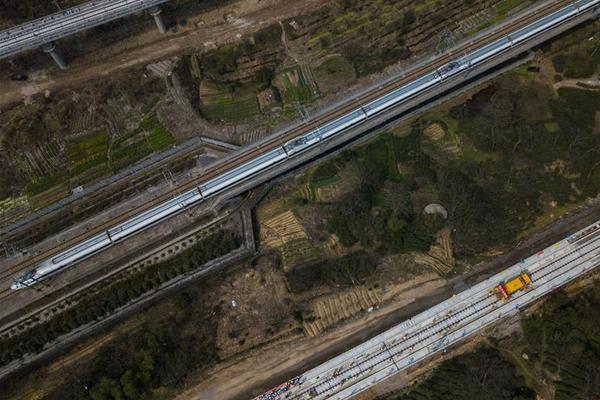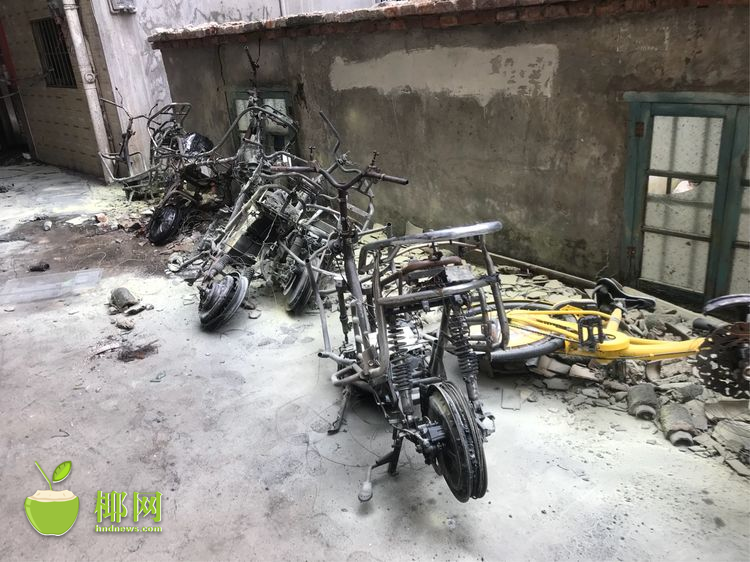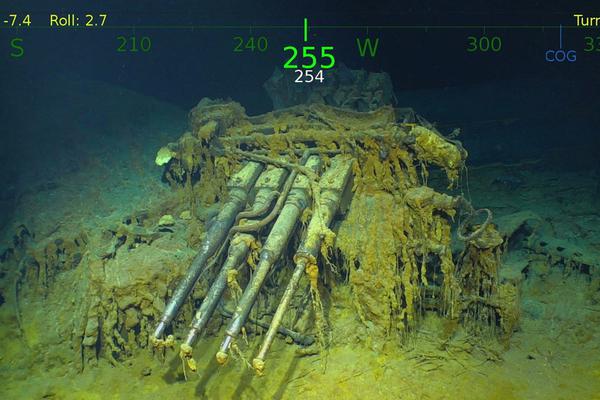
1. The failure of the oil-gas separator will cause the engine to burn oil. If the oil-gas separator fails, the oil-gas cannot be completely separated, which will cause the oil-gas to re-enter the engine to burn, increasing the fuel consumption of the engine. The oil-gas separator belongs to the forced ventilation system of the crankcase.
2. The failure of the oil-gas separator will cause the engine to burn oil. If the oil-gas separator fails, it will cause the oil and steam to be completely separated, whichThe sample will cause the oil steam to re-enter the engine and burn, which will increase the oil consumption of the engine.
3. Damage to the oil-gas separator will cause oil to burn. The function of the oil-gas separator is to separate the oil discharged from the crankcase and reduce the oil discharge from the crankcase breathing port to the engine. When the oil-gas separator works normally, it only absorbs exhaust gas without oil. If there is a problem with the oil-gas separator, it will lose the oil-gas separation function and inhale oil.
The failure of the oil-gas separator will cause the engine to burn oil. If the oil-gas separator fails, the oil-gas cannot be completely separated, which will cause the oil-gas to re-enter the engine combustion and increase the fuel consumption of the engine. The oil-gas separator belongs to the forced ventilation system of the crankcase.
If the oil-gas separator is broken, it will cause oil to burn. The function of the oil-gas separator is to separate the oil in the crankcase to discharge the gas and reduce the oil discharged from the crankcase breathing port to the outside of the engine. When the oil-gas separator is working normally, it only absorbs exhaust gas but not oil.
The failure of the oil-gas separator will affect the combustion of the oil.If the oil-gas separator fails, it will affect the inability of the oil vapor to be completely separated, thus affecting the oil vapor entering the engine combustion, which in turn affects the oil consumption. The oil-gas separator is a crankcase forced ventilation system.
The damage of the oil-gas separator will cause oil to burn. The function of the oil-gas separator is to separate the oil discharged from the crankcase and reduce the oil discharge from the crankcase breathing port to the engine. When the oil-gas separator works normally, it only absorbs exhaust gas without oil. If there is a problem with the oil-gas separator, it will lose the oil-gas separation function and inhale oil.
1. The following is an introduction to the role of oil-gas separator: Separation of oil: Separation of oil in the gas discharged from the crankcase.The above substances can be separated in time. Extend the service life: keep the oil with good lubrication performance. It is conducive to prolonging life. Reduce the wear and corrosion of machine parts: maintain the good surface condition of each friction part.
2. The function of the oil-gas separator is to separate the oil discharged from the crankcase and reduce the oil discharged from the crankcase breathing port to the outside of the engine. As the saying goes, an oil-gas separator is an exhaust valve. Also known as pressure control valve. The oil-gas separator only absorbs the exhaust gas but not the oil when it is working normally.
3. The function of the oil-gas separator is to separate the oil from the exhaust gas of the crankcase and shorten the discharge of the oil from the crankcase air outlet to the outside of the engine. The oil-gas separator is also known as the exhaust valve, and some people also call it the pressure regulating valve. When the oil-gas separator is working normally, it only absorbs exhaust gas, not oil.
1. The function of the oil-gas separator is to separate the oil from the exhaust gas of the crankcase and reduce the discharge of the oil from the crankcase air outlet to the outside of the engine. It is generally installed on the air outlet or exhaust pipe of the engine crankcase. The function of the automobile oil-gas separator is as follows: keep the oil with good lubrication performance and extend the service life of the oil.
2. The function of the oil-gas separator is to separate the oil in the gas discharged from the crankcase and reduce the oil discharge from the crankcase breathing port to the outside of the engine. The oil-gas separator is also known as the exhaust valve. Some people also call it pressure control valve. When the oil-gas separator is working normally, it only absorbs exhaust gas but not oil.
3. The oil-gas separator is a device used to continuously separate the oil and gas from the oil pump and exclude the gas mixed in the oil.
The oil-gas separator is generally installed at the engine crankcase air outlet or exhaust pipe. The oil-gas separator is also known as the exhaust valve. Some people also call it a pressure control valve. The function of the oil-gas separator is to separate the oil in the exhaust gas of the crankcase and reduce the oil from the crankcase breathing port to the outside of the engine.
Most of the oil-gas separators are installed in the local position of the engine crankcase air outlet or exhaust pipe. Oil-gas separators are also known as exhaust valves, and some people also call them pressure regulating valves. The function of the oil-gas separator is to separate the oil from the exhaust gas of the crankcase and shorten the discharge of the oil from the crankcase air outlet to the outside of the engine.
The oil-gas separator is generally installed in the breathing port of the engine crankcase or the part of the exhaust pipe.As the name implies, the function is to separate the oil in the gas of the crankcase and reduce the discharge of oil from the crankcase breathing port to the outside of the engine. [ The function of automobile oil-gas separator] Maintain the oil with good lubrication performance and extend the service life of the oil.
The part of the engine crankcase breathing port or exhaust pipe. The Oman oil-gas separator is installed in the breathing port or exhaust pipe of the engine crankcase. Its function is to separate the oil from the crankcase exhaust gas and shorten the discharge of the oil from the crankcase exhaust port.
The position of the oil-gas separator is generally in the breathing port of the engine crankcase or the exhaust pipe. The oil-gas separator is also known as the exhaust valve, which is also called the pressure control valve. The function of the oil-gas separator is to separate the oil in the crankcase to discharge the gas and reduce the oil discharged from the crankcase breathing port to the outside of the engine.
Generally, the carbon tank solenoid valve is in this engine, and you are facing the left side of the engine or under this chassis. If you don't have the left side, then you have a simple one under the chassis. This solenoid valve does not have this separator before.
bingo plus update today-APP, download it now, new users will receive a novice gift pack.
1. The failure of the oil-gas separator will cause the engine to burn oil. If the oil-gas separator fails, the oil-gas cannot be completely separated, which will cause the oil-gas to re-enter the engine to burn, increasing the fuel consumption of the engine. The oil-gas separator belongs to the forced ventilation system of the crankcase.
2. The failure of the oil-gas separator will cause the engine to burn oil. If the oil-gas separator fails, it will cause the oil and steam to be completely separated, whichThe sample will cause the oil steam to re-enter the engine and burn, which will increase the oil consumption of the engine.
3. Damage to the oil-gas separator will cause oil to burn. The function of the oil-gas separator is to separate the oil discharged from the crankcase and reduce the oil discharge from the crankcase breathing port to the engine. When the oil-gas separator works normally, it only absorbs exhaust gas without oil. If there is a problem with the oil-gas separator, it will lose the oil-gas separation function and inhale oil.
The failure of the oil-gas separator will cause the engine to burn oil. If the oil-gas separator fails, the oil-gas cannot be completely separated, which will cause the oil-gas to re-enter the engine combustion and increase the fuel consumption of the engine. The oil-gas separator belongs to the forced ventilation system of the crankcase.
If the oil-gas separator is broken, it will cause oil to burn. The function of the oil-gas separator is to separate the oil in the crankcase to discharge the gas and reduce the oil discharged from the crankcase breathing port to the outside of the engine. When the oil-gas separator is working normally, it only absorbs exhaust gas but not oil.
The failure of the oil-gas separator will affect the combustion of the oil.If the oil-gas separator fails, it will affect the inability of the oil vapor to be completely separated, thus affecting the oil vapor entering the engine combustion, which in turn affects the oil consumption. The oil-gas separator is a crankcase forced ventilation system.
The damage of the oil-gas separator will cause oil to burn. The function of the oil-gas separator is to separate the oil discharged from the crankcase and reduce the oil discharge from the crankcase breathing port to the engine. When the oil-gas separator works normally, it only absorbs exhaust gas without oil. If there is a problem with the oil-gas separator, it will lose the oil-gas separation function and inhale oil.
1. The following is an introduction to the role of oil-gas separator: Separation of oil: Separation of oil in the gas discharged from the crankcase.The above substances can be separated in time. Extend the service life: keep the oil with good lubrication performance. It is conducive to prolonging life. Reduce the wear and corrosion of machine parts: maintain the good surface condition of each friction part.
2. The function of the oil-gas separator is to separate the oil discharged from the crankcase and reduce the oil discharged from the crankcase breathing port to the outside of the engine. As the saying goes, an oil-gas separator is an exhaust valve. Also known as pressure control valve. The oil-gas separator only absorbs the exhaust gas but not the oil when it is working normally.
3. The function of the oil-gas separator is to separate the oil from the exhaust gas of the crankcase and shorten the discharge of the oil from the crankcase air outlet to the outside of the engine. The oil-gas separator is also known as the exhaust valve, and some people also call it the pressure regulating valve. When the oil-gas separator is working normally, it only absorbs exhaust gas, not oil.
1. The function of the oil-gas separator is to separate the oil from the exhaust gas of the crankcase and reduce the discharge of the oil from the crankcase air outlet to the outside of the engine. It is generally installed on the air outlet or exhaust pipe of the engine crankcase. The function of the automobile oil-gas separator is as follows: keep the oil with good lubrication performance and extend the service life of the oil.
2. The function of the oil-gas separator is to separate the oil in the gas discharged from the crankcase and reduce the oil discharge from the crankcase breathing port to the outside of the engine. The oil-gas separator is also known as the exhaust valve. Some people also call it pressure control valve. When the oil-gas separator is working normally, it only absorbs exhaust gas but not oil.
3. The oil-gas separator is a device used to continuously separate the oil and gas from the oil pump and exclude the gas mixed in the oil.
The oil-gas separator is generally installed at the engine crankcase air outlet or exhaust pipe. The oil-gas separator is also known as the exhaust valve. Some people also call it a pressure control valve. The function of the oil-gas separator is to separate the oil in the exhaust gas of the crankcase and reduce the oil from the crankcase breathing port to the outside of the engine.
Most of the oil-gas separators are installed in the local position of the engine crankcase air outlet or exhaust pipe. Oil-gas separators are also known as exhaust valves, and some people also call them pressure regulating valves. The function of the oil-gas separator is to separate the oil from the exhaust gas of the crankcase and shorten the discharge of the oil from the crankcase air outlet to the outside of the engine.
The oil-gas separator is generally installed in the breathing port of the engine crankcase or the part of the exhaust pipe.As the name implies, the function is to separate the oil in the gas of the crankcase and reduce the discharge of oil from the crankcase breathing port to the outside of the engine. [ The function of automobile oil-gas separator] Maintain the oil with good lubrication performance and extend the service life of the oil.
The part of the engine crankcase breathing port or exhaust pipe. The Oman oil-gas separator is installed in the breathing port or exhaust pipe of the engine crankcase. Its function is to separate the oil from the crankcase exhaust gas and shorten the discharge of the oil from the crankcase exhaust port.
The position of the oil-gas separator is generally in the breathing port of the engine crankcase or the exhaust pipe. The oil-gas separator is also known as the exhaust valve, which is also called the pressure control valve. The function of the oil-gas separator is to separate the oil in the crankcase to discharge the gas and reduce the oil discharged from the crankcase breathing port to the outside of the engine.
Generally, the carbon tank solenoid valve is in this engine, and you are facing the left side of the engine or under this chassis. If you don't have the left side, then you have a simple one under the chassis. This solenoid valve does not have this separator before.
100 free bonus casino no deposit GCash
author: 2025-02-06 00:57App to watch Champions League live free
author: 2025-02-06 01:57 Hearthstone arena
Hearthstone arena
123.86MB
Check PAGCOR online casino free 100
PAGCOR online casino free 100
878.56MB
Check Casino Plus app
Casino Plus app
337.87MB
Check bingo plus update today
bingo plus update today
134.53MB
Check Hearthstone arena deck Builder
Hearthstone arena deck Builder
825.14MB
Check Hearthstone Arena Tier List
Hearthstone Arena Tier List
838.63MB
Check Bingo Plus stock
Bingo Plus stock
995.92MB
Check UEFA European championship
UEFA European championship
911.34MB
Check casino plus free 100
casino plus free 100
731.93MB
Check Hearthstone Arena Tier List
Hearthstone Arena Tier List
975.71MB
Check UEFA Champions League live streaming app
UEFA Champions League live streaming app
267.81MB
Check Casino Plus login register
Casino Plus login register
821.63MB
Check 100 free bonus casino no deposit GCash
100 free bonus casino no deposit GCash
578.62MB
Check DigiPlus fair value
DigiPlus fair value
669.47MB
Check Casino Plus GCash login
Casino Plus GCash login
111.84MB
Check casino plus free 100
casino plus free 100
887.17MB
Check Hearthstone Arena win rate
Hearthstone Arena win rate
127.43MB
Check Casino Plus GCash login
Casino Plus GCash login
494.55MB
Check 100 free bonus casino no deposit GCash
100 free bonus casino no deposit GCash
394.57MB
Check Arena plus APK
Arena plus APK
237.54MB
Check Hearthstone arena class win rates reddit
Hearthstone arena class win rates reddit
127.21MB
Check UEFA EURO
UEFA EURO
118.25MB
Check DigiPlus fair value
DigiPlus fair value
575.85MB
Check UEFA live free
UEFA live free
171.77MB
Check UEFA Champions League
UEFA Champions League
862.26MB
Check Hearthstone Arena win rate
Hearthstone Arena win rate
277.19MB
Check Hearthstone Arena Tier List
Hearthstone Arena Tier List
986.32MB
Check DigiPlus fair value
DigiPlus fair value
693.76MB
Check DigiPlus fair value
DigiPlus fair value
959.49MB
Check Walletinvestor digi plus
Walletinvestor digi plus
811.29MB
Check App to watch Champions League live free
App to watch Champions League live free
527.23MB
Check Casino Plus free 100
Casino Plus free 100
588.59MB
Check Hearthstone arena deck Builder
Hearthstone arena deck Builder
374.25MB
Check UEFA EURO
UEFA EURO
443.15MB
Check Hearthstone arena
Hearthstone arena
967.65MB
Check DigiPlus stock
DigiPlus stock
667.93MB
Check
Scan to install
bingo plus update today to discover more
Netizen comments More
1819 Casino Plus GCash login
2025-02-06 02:33 recommend
2805 UEFA Champions League
2025-02-06 02:01 recommend
2523 Arena plus APK
2025-02-06 01:57 recommend
1187 Hearthstone Wild Decks
2025-02-06 01:03 recommend
2759 Casino Plus free 100
2025-02-06 00:32 recommend